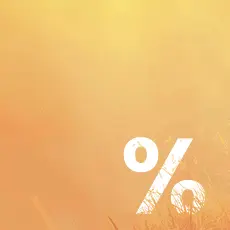Most Common Comic Sizes
The dimensions of comic book printing have changed significantly over time, with formats evolving to suit different periods, content, and target audiences. From large formats used in the early years for dramatic storytelling to smaller, more portable sizes for indie comics, the size of a comic plays a key role in shaping the reader's experience and the creative process.

Comics today come in a variety of dimensions depending on genre, artistic vision, and the type of story being told. While some formats are standard, others are tailored to specific creative needs.Here are some of the most common comic dimensions:
| Comic Type | Years | Dimensions (inches) | Binding Type |
| Golden Age | 1930s–1950s | 7.125 x 10.5 | Saddle-stitched |
| Silver Age | 1950s–1970s | 6.75 x 10.25 | Saddle-stitched |
| Standard US Comic | 1970s–present | 6.625 x 10.25 | Saddle-stitched |
| Trade Paperback | 1990s–present | Varies, often 6.625 x 10.25 | Perfect bound (softcover) |
| Manga Format | 1990s–present | 5 x 7.5 | Perfect bound (softcover) |
The evolution of comic book dimensions reflects the changing needs of creators and readers, and the format continues to be an essential element of how a comic is experienced. Whether for immersive storytelling or niche genres, size plays a crucial role in how comics are presented and enjoyed.
Popular Alternative Comic Sizes and Their Uses
In addition to the standard comic dimensions, there are many alternative sizes that serve specific creative purposes. These alternative formats allow comic artists to experiment with different panel layouts, storytelling styles, and audience experiences. Smaller, compact sizes like 3.5 x 8.5 inches are ideal for vertical mini-comics or humor strips, while larger formats like 11 x 8.5 inches work well for panoramic comics or experimental page layouts. These alternative sizes give creators more flexibility, whether they’re designing indie comics, graphic novels, or even children’s books.

Here’s a look at some popular alternative comic sizes and their uses:
| Uses for Comics | Format (inches) |
| Slim, vertical comics or humorous mini-strips | 3.5 x 8.5 |
| Experimental panel layouts, especially for vertical comics | 4.25 x 11 |
| One of the most popular indie comic sizes – cost-effective & portable | 5.5 x 8.5 |
| Square comics, often for children's books or cartoon strips | 5.5 x 5.5 |
| Landscape format for humorous or experimental comics | 6 x 4 |
| Common size for graphic novels or webcomic prints | 6 x 9 |
| Large-format anthologies, art books, or detailed comics | 8.5 x 11 |
| Practical size for sketch comics and collections | 8.5 x 5.5 |
| Perfect for square layouts, often used in modern children's literature | 8.5 x 8.5 |
| Landscape format for panoramic comics or experimental visuals | 11 x 8.5 |
Need something custom that’s not on the list?
No problem – just file a custom request, and we’ll make it happen!
These alternative comic sizes offer creators the flexibility to tailor their work to specific storytelling needs and artistic preferences. Smaller formats like 3.5 x 8.5 inches or 4 x 6 inches are perfect for compact, portable mini-comics, zines, or quick humor strips, making them ideal for indie creators or small print runs. Larger sizes, such as 8.5 x 11 inches or 11 x 8.5 inches, allow for expansive, detailed artwork, making them popular for graphic novels, art books, and panoramic comics. These larger formats give creators more space to develop intricate visuals, while still providing a unique reading experience for the audience.
Moreover, square formats like 5.5 x 5.5 inches or 8.5 x 8.5 inches are becoming increasingly popular in children's literature and experimental comics. Their shape offers a distinct aesthetic that allows for unconventional layouts and designs. Landscape formats such as 6 x 4 inches or 11 x 8.5 inches lend themselves well to comics that rely heavily on visual storytelling, providing a broader canvas to showcase dynamic action or scenic illustrations. With so many options available, alternative comic sizes give creators the freedom to experiment with how they present their work, offering new ways to engage readers and convey unique narratives.
Alternative comic sizes offer creators the freedom to experiment and tailor their work for specific audiences and content. Smaller formats like 4 x 6 or 5.5 x 5.5 inches are perfect for indie comics, zines, and niche projects, giving them a unique, compact feel. Larger sizes like 8.5 x 11 or 6 x 9 inches, on the other hand, provide more space for detailed artwork and storytelling, ideal for graphic novels or art books.
These diverse formats not only give creators more flexibility, but they also offer readers different experiences. Whether for quick, portable comics or expansive graphic novels, these sizes allow comics to stand out and cater to a variety of tastes and creative visions.
Comic Binding Options
When producing your comic books, selecting the right binding option is crucial to achieving a professional look and feel. Popular choices include saddle stitching, ideal for smaller comic books or magazines, offering a clean, compact finish. Perfect binding provides a more durable, premium look and is great for thicker graphic novels or collections, ensuring the spine holds up over time. For a unique touch, wire-o binding allows your comic to lay flat, making it perfect for large-format or sketch-based comics where readability and presentation are key. With the right binding, your comic book can reflect the quality and creativity you’ve put into your work.
Comic Book Dimensions Across Cultures: US vs. Manga
When it comes to comic book dimensions, cultural differences play a significant role in shaping the format and reading experience. In the United States, the most common comic book size is the "standard comic" at 6.625 x 10.25 inches. This format is generally used for superhero comics, graphic novels, and serialized stories. The dimensions provide ample space for detailed artwork while still being manageable for readers. These comics are typically printed in portrait orientation, offering a balance between artwork and text that allows readers to follow the story easily.
On the other hand, Japanese manga comics typically feature smaller, more compact formats, with sizes like 5 x 7.5 inches being the norm. Manga books are usually printed in a vertical orientation, which complements the reading style in Japan, where people read from right to left. The smaller size makes manga more portable, affordable, and ideal for mass production, leading to a much more extensive distribution across different formats, including weekly magazines and standalone volumes. This size difference isn't just about space; it reflects the cultural importance of comics, where manga is often an integral part of daily life, appealing to a wide range of ages and genres.
These dimensional differences also contribute to the overall experience of reading comics. US comics tend to focus on larger, more visually dynamic spreads, often prioritizing detailed illustrations of action scenes or superheroes. Manga, in contrast, often relies on smaller panels, creating a more intimate, continuous flow of storytelling that emphasizes character development and narrative pacing. Understanding these cultural distinctions can help comic creators choose the best format for their own work, depending on the story they wish to tell and the audience they wish to reach.
The Future of Comic Book Sizes: Trends and Innovations
As the comic book industry evolves, so too do the formats and dimensions that define how stories are presented. In recent years, there has been a noticeable shift towards experimenting with new sizes to enhance the storytelling experience and adapt to changing reader preferences. The rise of digital comics has played a huge role in this transformation, allowing for more fluid and flexible formats that aren't confined to traditional print dimensions. As webcomics continue to grow in popularity, creators are experimenting with unique sizes that better suit digital platforms, offering interactive or vertically scrolling layouts that break away from the traditional page-by-page format.

On the print side, alternative comic book sizes are becoming more common as indie and self-published creators seek to differentiate their work. Small-run comics and zines are embracing more diverse formats, with square, mini, and landscape comics gaining traction for their ability to stand out and offer something different. For example, square formats, like 8.5 x 8.5 inches, provide a fresh canvas that is perfect for modern children’s comics or visually experimental projects. As print-on-demand services grow, creators now have more freedom to choose and print comics in sizes that align with their creative vision, without the limitations of traditional publishing.
Additionally, larger-sized graphic novels are continuing to push boundaries with bold new formats that cater to both art and narrative. Oversized editions of graphic novels and art books are becoming popular among collectors, offering larger-than-life artwork that demands attention and elevates the visual impact of the story. With more options available, the future of comic book sizes seems to be all about versatility. As comics continue to expand beyond their traditional formats, both in print and online, creators are free to explore new ways to present their stories, providing readers with fresh, innovative experiences that push the boundaries of the medium.
Frequently Asked Questions
Why are manga comics smaller than American comics?
Manga comics are typically smaller, with dimensions like 5 x 7.5 inches being common. This compact size makes them more portable and affordable, and it aligns with Japanese reading habits, where comics are often consumed on the go and read right to left.
Are there any innovative comic book sizes emerging?
Yes! With the rise of digital comics and indie publishing, creators are experimenting with unique formats, such as square comics (like 8.5 x 8.5 inches), mini comics, or landscape formats. These innovative sizes help comics stand out, whether in print or online, and cater to modern storytelling techniques and aesthetic choices.
How do comic book sizes impact storytelling?
Comic book size can significantly affect how a story is presented. Larger formats provide more space for intricate artwork and detailed scenes, while smaller formats allow for quicker, more compact storytelling. The size of a comic can influence pacing, layout design, and the overall reading experience.
What is the most common comic book size?
The most common comic book size in the United States is 6.625 x 10.25 inches. This is the standard size for most superhero comics, graphic novels, and serialized stories. It's large enough to showcase detailed artwork while remaining manageable for readers.
What is the biggest comic book ever made?
The biggest comic book ever created is The Incredible Hulk #102 in 1968, which holds the Guinness World Record for the largest comic book. It was printed at a massive size of 57 inches by 72 inches, a true giant in the comic world!
Order Your Custom Comic Book Today: Bring Your Story to Life
Whether you're an indie creator or a fan looking to showcase your artwork, custom comic book printing is the perfect way to bring your vision to life. Popular comic book sizes, like 6.625 x 10.25 inches or 5.5 x 8.5 inches, offer the ideal balance between detailed illustrations and readable text. You can also choose from a variety of options such as square formats (8.5 x 8.5 inches or 5.5 x 5.5 inches) for a unique presentation.
Need something different? We offer custom comic book sizes tailored to your creative needs. Whether you’re looking for a large format to showcase expansive artwork or a compact size for quick zines, we've got you covered. Our binding options saddle stitched for shorter comics or perfect-bound for graphic novels - ensure your comic will look as professional as it reads.
Order your comic book with either glossy or matte covers for a polished finish. If you're looking for international formats, such as DIN A4 sizes or other regional standards, we can accommodate that too.
Don’t wait - turn your comic idea into a reality today. Contact us now for a custom quote and start printing your masterpiece!
Get an Instant Print Quote for Your Comic Book!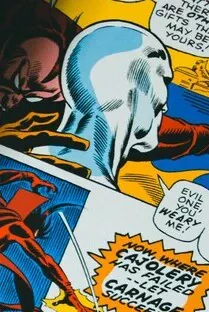




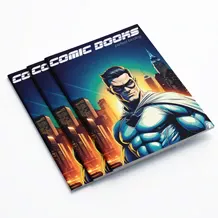
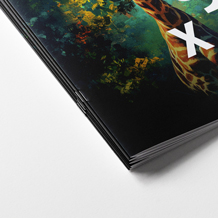 Saddle Stitch
Saddle Stitch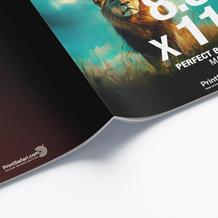 Perfect Binding
Perfect Binding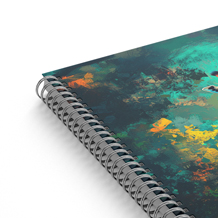 Wire-O
Wire-O
